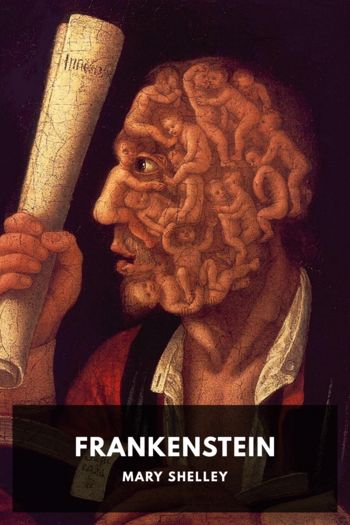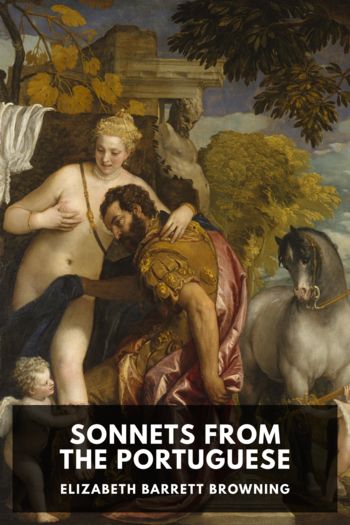Two-Way Mirror Fiona Sampson (best romance ebooks .txt) 📖

- Author: Fiona Sampson
Book online «Two-Way Mirror Fiona Sampson (best romance ebooks .txt) 📖». Author Fiona Sampson
There’s yet one more medic involved. Back in spring 1821, before Nuttall and Cother were called in, family doctor Mr John Carden examined Ba. In early autumn he reappears at the Spa Hotel to prescribe ‘setons’ or puncture threads, which, like the cupping (applying a hot cup to the skin to raise blisters) she has already endured, are supposed to facilitate the discharge of undesirable matter. Carden is sure that an external cause, whether poison or an infection, is the root of Ba’s illness, because when he was first called in she, Henrietta and Arabella were all suffering from the same symptoms. He prescribed all three a bark draught (a kind of tonic given for scurvy and as an astringent) and as a follow-up added valerian, which in the twenty-first century will still be a herbal remedy for diseases of the nervous system. This apparently cured Arabella, but both elder girls went on (coincidentally?) to develop measles; at which point Ba’s recovery halted.
Contemporary sources suggest that the bark Carden prescribed may have been elm, which is only very mildly toxic. Much more harmful is the opium Ba has been prescribed, presumably also by him. As Cother remarks with acerbity in June, ‘I understand she has taken a variety of powerful medicines without any permanent benefit. Opium at one time relieved the spasms but it has ceased to have that effect.’ He’s right. It’s a powerful drug for a young body to tolerate. Small wonder that by the time he examines her:
The mind has ceased in a great degree to engage in those investigations and pursuits which formerly constituted it’s greatest delight, and there appears to be a degree of listlessness perceptible to those around her.
Even in tiny quantities opiates are famously addictive; and they constipate. No surprise that someone who’s also confined to bed has lost her appetite. The fifteen-year-old, ‘has only a relish for highly seasoned food. She has shrunk so much as to have produced in the minds of her friends great anxiety.’
It also sounds very much as though she’s depressed. In the strange limbo of the room at Gloucester, her life is to all intents and purposes suspended: rather like her spine in its harness. Despite Mamma’s ‘daily dispatches’, this time emptied of everything and everyone she loves must drag. In the monotony it would be easy for symptoms to enlarge to the point of hypochondria. But is Ba a hypochondriac? This first illness is the start of the mythologising of Elizabeth Barrett Browning. Future pop psychology will decide that she is the very type of a Victorian invalid: suffering from psychosomatic or even hysterical symptoms in protest at her restrictive family life, or faking illness in order to free herself from the conventional roles played by young women of her time, or anorexic, or definitively suffering from one or another specific complaint. Imaginative diagnoses of her deepest psyche crowd around her bedside, as if biographers and dramatists weren’t voyeurs but counted along with her doctors and family.
We don’t. But we do have the benefit of hindsight. We know that Ba will recover from this crisis – if not completely – and live another forty, highly productive years. We also know that she’ll suffer continued ill health. What we can’t be certain about is whether she’s being irrevocably damaged by the treatment she’s receiving now. Months confined to bed on a regime of opium would be enough to stop the healthiest teenager being able to take more than a few steps at a time, and the sling’s orthopaedic interference can only exacerbate this weakness. So it’s not surprising that, by the time Ba gives up hope of a complete cure and returns to Hope End in May 1822, she’s scarcely able to walk.
But there’s more to it than this. Ba has contracted something. Viewed from the twenty-first century, her symptoms suggest nothing so much as viral infection followed by post-viral syndrome. Today, debate tries to bring her symptoms, formulated in nineteenth-century terms, into the brightly lit modern consulting room. In 1989, D. A. B. Young started a discussion in the British Medical Journal by arguing that Ba had initially fallen ill with what was ‘certainly an encephalomyelitis of one kind or another’. He suggests that this could have been measles encephalitis, or that the ‘measles’ she and Henrietta caught was actually misdiagnosed poliomyelitis. Polio would certainly explain her later difficulties with exertion and even breathing, which Young startlingly, and fascinatingly, associates with possible deformity of the spine caused by polio-related scoliosis. The excruciating spasms Ba suffers aren’t dissimilar to those experienced by anyone with a major spinal prolapse. The slow onset of ‘paralytic scoliosis with thoracic involvement’ – up to two years after infection – would also explain why doctors examining Ba specifically for spinal disease in the weeks immediately after she became ill could find nothing wrong. Young also follows the trail of Pen Browning’s loyal belief that his mother suffered a spinal injury associated with riding, or preparing to ride, her pony. This would be a palatably romantic version of continuing spinal problems. More recently, looking in another direction, Anne Buchanan and Ellen Buchanan Weiss have noticed the similarity between the triggers Ba reports and those for the rare muscle-weakening disorder, hypokalemic periodic paralysis.
Equally possible is that the agonising spasms that Ba experiences at the peak of her illness are tardive dystonia, caused by specific substances acting on





Comments (0)